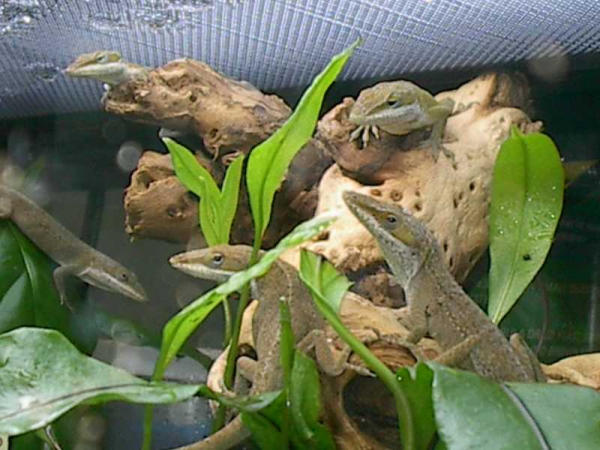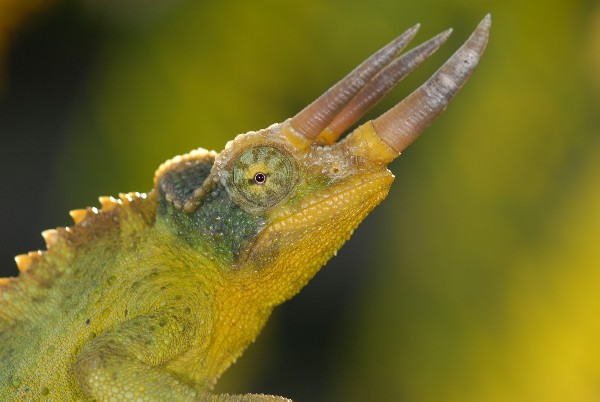|
The Worst Reptiles for Beginning Hobbyistsby Petra Spiess

Green Anoles Anoles are another "disposable reptile" in the industry. Green anoles are a lot more difficult to maintain than most people realize. Many people purchase anoles as pets for their children because they are very inexpensive. What they do not realize, or are not told, is that the proper set-up for anoles is ten times the purchase price of the animal. Anoles are still relatively inexpensive even with the proper equipment, but there are several other factors that make this species a less than ideal captive. Almost all anoles on the market are wild-caught animals that are heavily parasitized. Even a healthy looking anole can carry a huge parasite load that will eventually lead to its demise. Anoles DO NOT tolerate handling well. This lizards are naturally very wary (everyone eats them) and become very stressed by handling. Captive born anoles in the proper, naturalistic enclosure can make a beautiful display, but they are not suitable for beginning reptile pets.
Wild-Caught Ball Pythons Although captive born ball pythons make one of the best reptile species for the beginner, wild-caught or captive hatched species are among the worst. Wild-caught adult ball pythons are notorious for finicky eating and heavy parasitization. Do not let the term "captive hatched" or "farm raised" fool you, these animals are only slightly better than wild-caught specimens. The reason for this is the fact that captive hatched or farm raised ball pythons are still imports, and although they many not be as heavily parasitized as their wild-caught brethren, are still subject to the stresses of the importation process. Imported ball pythons, whether they be wild-caught or captive hatched, are often stressed severely by shipping, and crowding together with other animals at dealers and importers. The crowding that occurs often acts as a vector for the spread of external parasites and disease. The only ball pythons a beginner should consider are captive born, feeding animals that have not been subjected to excessive stress. Although the wild-caught and captive hatched ball pythons are cheaper, they will cost more in vet bills and frustration in the long run.

Wild-Caught Chameleons of any Species Even captive born chameleon are demanding captives, but mixing together an antisocial nature, the stress and crowding of importation, and heavy parasitization, makes wild-caught chameleons terrible captives for the beginner. Some dealers make a concerted effort to establish wild caught chameleons before sale, deparisitizing and acclimating their animals, most importers however, are not this conscientious and subscribe to the idea of "buyer beware". Chameleons are asocial, and do not tolerate handling well. Chameleons need to be housed away from other chameleons and from stressful household occurrences such as cats, dogs, vacuum cleaners, and high traffic areas. Feeding and housing chameleons appropriately requires a lot of effort and time, these animals are stunning, fascinating, and beautiful, but are too difficult and frustrating for the beginning hobbyist. < BACK || NEXT >
|